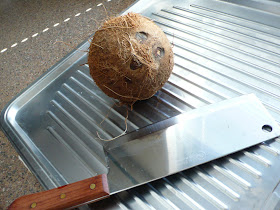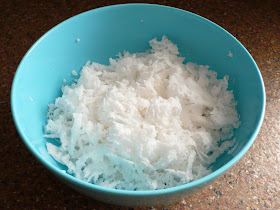I don’t really eat much breakfast, I usually have some fruit and then I’m out the door and on my way to work. But I love going out for a big breakfast on the weekends and catching up with friends. Last weekend I had breakfast at Riki Blakes Café (4 Blake Street, North Perth), this place was recommended to me by a friend who said that they make some great North African and Middle Eastern dishes for breakfast. When I saw the menu, I was drawn to the Shak Shuka dish, it sounded delicious and it was something different from the usual breakfast of bacon, eggs, mushrooms and toast etc.
Shak Shuka is a spicy tomato mixture served in the pan that it is cooked in with poached eggs on top, it is eaten with pieces of bread dipped in it. It was very flavoursome, the tomato mixture was rich and aromatic with different spices. All my friends who ordered Shak Shuka agreed that it was delicious.
When I have a dish that I enjoy eating, the next thing I want to do is learn how to cook it myself.
Shak Shuka is a North African dish and was brought to Israel by Tunisian Jews after the Jewish exodus from Arab lands. It’s a popular Israeli vegetarian dish that is eaten for breakfast. The name Shak Shuka is a combination of North African and Hebrew words, and means “all mixed up.” I looked up some recipes on the internet and it’s a very simple dish to make. It’s also very versatile in that it can be vegetarian or you can add in some sausages, and there are many different versions of the spicy tomato mixture where you can add other vegetables and vary the combination of spices used. So you can basically put in anything you want and then ‘mix it all up’.
Over the Anzac day long weekend, I cooked up some Shak Shuka!
This is my version of Shak Shuka, an amalgamation of numerous internet recipes and my continual tasting as I cooked to try to get the flavours as close to the one that I had at Blakes Café…as I could remember…
Ingredients
• Olive oil
• 2 eggs
• bread (any bread will do – white, pita, Turkish, a baguette)
• crumbled goats cheese (or feta)
• parsley for garnish
Tomato mixture
• 1.2 kg Roma tomatoes
• 1 red capsicum
• 1 red paprika
• 2 shallots
• 3 cloves of garlic
• 1-1 ½ cup stock (I used chicken stock)
• 1 teaspoon sugar
• salt and pepper to taste
Spices
• 2 teaspoons sweet paprika powder
• ½ teaspoon cumin powder
• ½ hot paprika powder
• ¼ cayenne powder
• ½ turmeric powder
• ½ coriander powder
• ¼ teaspoon caraway powder
Optional
• For more heat – add in a jalapeno into the tomato mixture or some harrisa paste.
• The tomato mixture can also have other vegetables like corn, peas, mushrooms or eggplant.
• You can also add in a little tomato paste (I had this written down but forgot to add some in).
Method
Preheat the oven to 200C and roast the capsicum and paprika for 15-20minutes. Then peel off the skin and finely dice.
Blanch the tomatoes, peel the skin off and dice them (removing the seeds and jelly).
Finely dice the shallots and garlic.
Heat up a small pan and then add in some olive oil. Saute the shallot and garlic together until fragrant and shallots become translucent.
Add in the tomatoes, capsicum and paprika and fry together for 5 minutes.
Add in a pinch of salt and pepper.
Then add in the spices (use the quantities listed above as a guide, feel free to alter the mix of spices to your desired taste)
Add in 1 cup of stock, reduce the heat to low and simmer uncovered for 20-30 minutes until the mixture is thick and little liquid is left, stirring occasionally to make sure that the vegetables so not stick to the bottom of the pan (add more stock as needed, ie: if it becomes to dry).
Then break in two eggs onto the surface of the spicy tomato mixture. Cover and cook for 3-4 minutes or until the eggs are done to your liking.

Remove the pan from the heat, sprinkle some chopped parsley on top and crumbled goats cheese. The dish is served in the pan that it is cooked in. Eat with pieces of bread dipped into the spicy tomato mixture with some egg.
(The eggs were a bit overdone, I would have liked the yolks to be more runny)








































